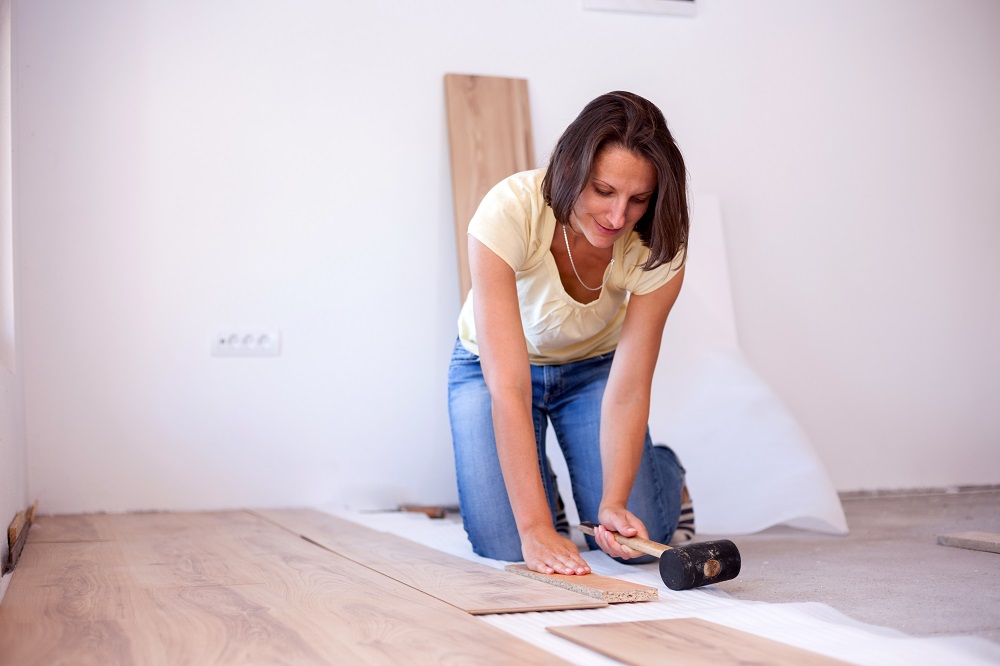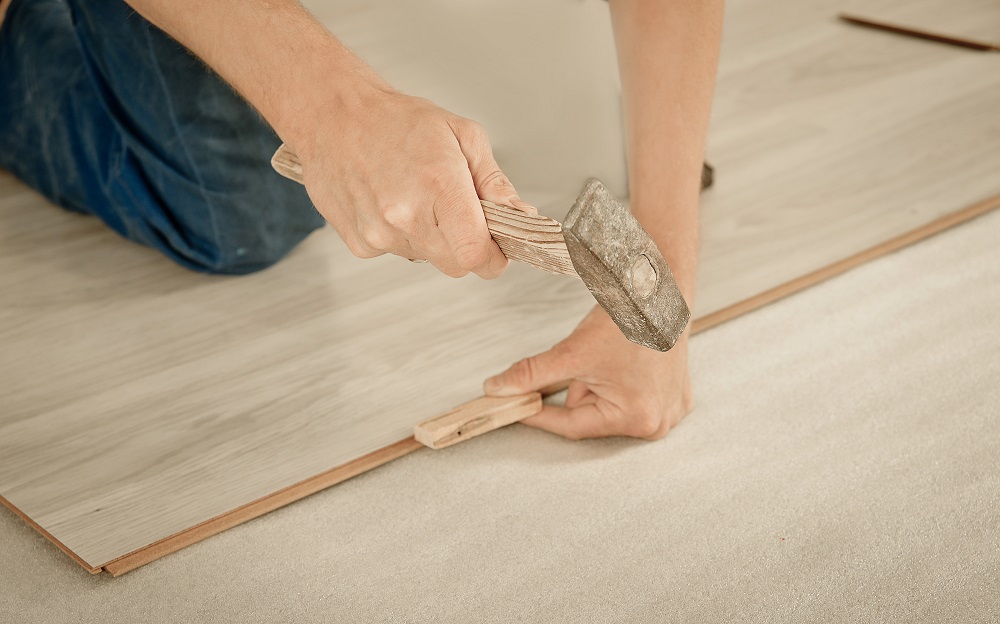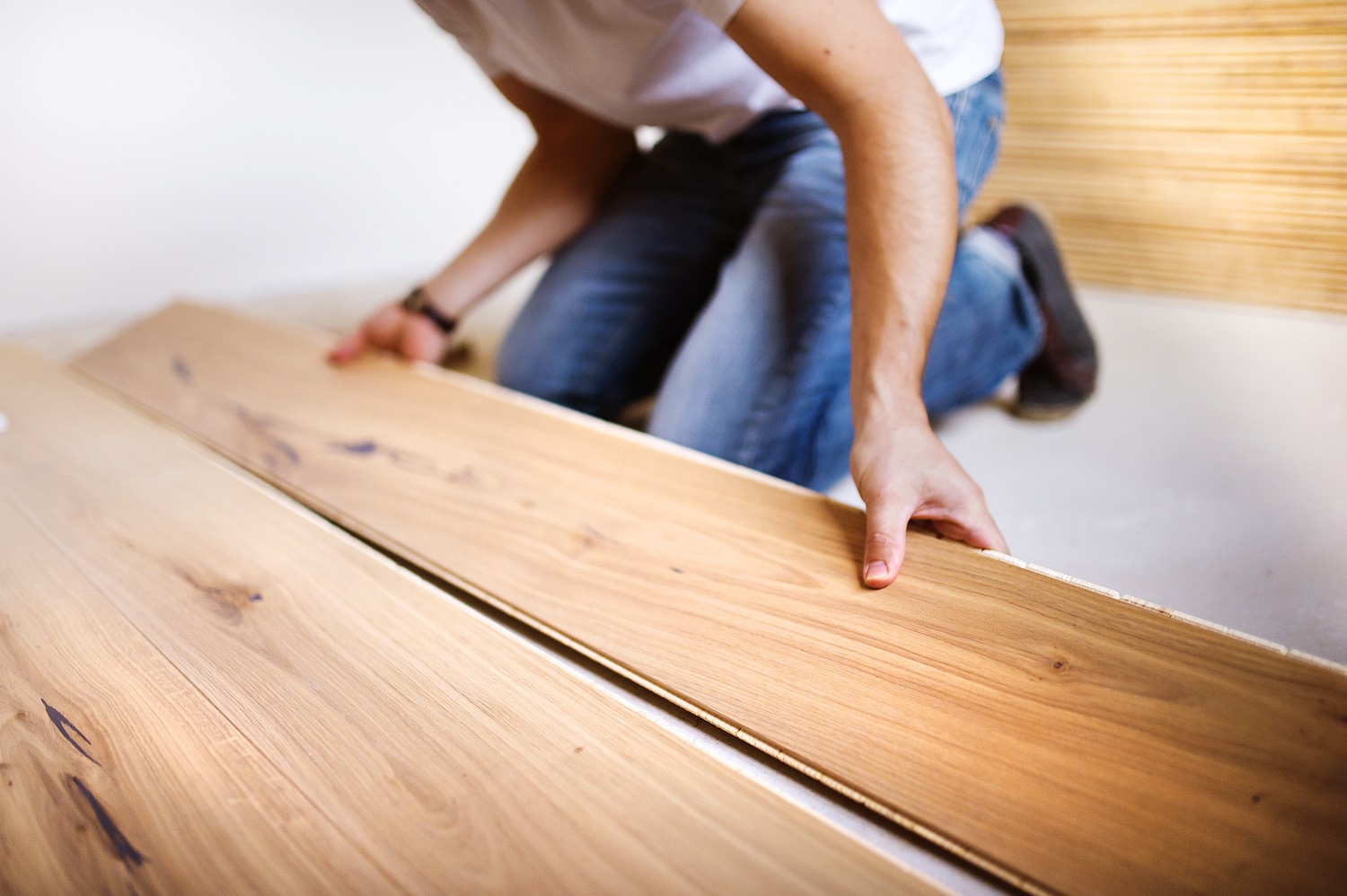“Can I install my flooring myself or should I hire a tradesman?”
This just might be the question our team hears most often and we take this question seriously. One of the biggest areas we focus on is helping customers avoid DIY mistakes and frustrations.
We have seen companies allow customers to believe a product is suitable for DIY installation when, in fact, it requires a professional tradesman. This puts the customer at risk of damaged products, wasted money, and a great deal of wasted time.
Although we do have some excellent DIY-friendly flooring options, we almost always recommend hiring a professional tradesman.
Here, we’ll outline the pros and cons of professional flooring installation vs DIY installation and tips for deciding which option is best for you and your space.
Benefits of Using a Qualified Tradesman
Some people shy away from hiring a professional contractor due to the cost it adds to the project. However, flooring installations can be complicated and present unexpected challenges. Letting a qualified tradesman install your flooring can end up saving money in the end by avoiding costly mistakes.
Hiring a professional flooring tradesman offers a host of benefits including:
- Efficiency and Speed – Because flooring professionals do this type of work almost every day, they can complete the job quickly and efficiently (usually within a day or two). This allows you to schedule the installation process around your timeline and count on it being completed in a timely manner.
- Guaranteed Quality – Flooring installations done by a professional tradesman deliver quality results. Many contractors will back up their work with a guarantee, meaning they will repair any issues at no additional cost. This type of guarantee is particularly valuable if the flooring installation is for a commercial space or investment property.
- Experience – While there are a host of DIY videos and resources available for DIY flooring installation, these do not compare to the extensive experience possessed by professional contractors.
- Predictable Results – Even the most expensive, high-quality flooring can appear cheap if the installation is not completed properly. Rather than wondering if your end result will be what you expect, relying on a professional ensures a visually appealing, structurally sound result.
- Convenience – Installing new flooring requires skilled decision making, concentration, and a good deal of time. Hiring a tradesman leaves you more time to focus on other projects.
- Protect Your Investment – Flooring is a significant investment that can increase the value of your property. In the wrong hands, your investment can be compromised. Flooring that is installed correctly the first time ensures you do not need constant repairs or replacements. Your floors will look exceptional and you will most likely have fewer maintenance costs in the long run and even extend the lifespan of your floors.
- Provides All Tools and Supplies – A professional flooring tradesman will come prepared with all the specialty saws, supplies, and tools needed to complete the job.
- Easy, Safe Disposal of Old Flooring – When you replace old flooring, it is your responsibility to dispose of it properly and safely. While you may think you can simply burn your old flooring, that is not a safe option for certain materials. For example, although laminates consist of a high percentage of wood, they often have an aluminum oxide coating that releases noxious chemicals when burned. If you make the wrong decision, your health could be at risk or you could face a fine.
- Unexpected Problems – Professional contractors are experienced to work through any challenges that present themselves during the installation process. In the rare case of something going wrong, damages are often covered under your contractor’s liability insurance.
- Proper Preparation – When preparing to install new flooring, there are multiple steps to complete. For example, proper subfloors are crucial to a good end result. A tradesman knows exactly how to prep and check subfloors, what red flags to look for, and exactly how to get everything in order prior to installation.
Pros and Cons of DIY Flooring Installation
When it comes to installing floors on your own, there are a variety of pros and cons to consider.
Pros
For most “DIYers”, choosing to install flooring comes down to cost. Since a significant portion of the total cost of new flooring comes down to labour, it is understandable why some homeowners go the DIY route. When done correctly, installing floors on your own can save a good chunk of money. It also allows the owner to work on their own schedule.
However, doing the job yourself will almost certainly take longer than having a professional handle the installation. You also run the risk of the project taking even longer if you have issues along the way. If you do make a mistake, you can end up wasting time, money, and needing the help of a professional after all.
DIY installation is an excellent way of providing the satisfaction of completing a job by yourself and leaves you with a visual reminder of the hard work you put in on your DIY floorboards. However, if the installation does not go as planned, you may be stuck staring at uneven spots or errors.
Cons
- Can actually end up being more expensive than hiring a professional if too many mistakes are made
- The results may not look as you hoped
- You are responsible for proper disposal of old flooring
- You may run into unexpected issues
- You will need to buy or rent necessary tools if you do not already own them
- Between the research, preparation, installation, and clean up, it requires a solid time commitment
Tips for DIY Installs
First, we always recommend checking with our team to be sure the flooring you choose is suitable for DIY installation. Be sure to ask as many questions as you can, buy or rent the highest quality tools, learn as much as you can about the materials and process, and avoid taking any shortcuts as these will inevitably lead to issues.
Here are a few quick tips to keep in mind for DIY flooring installation:
- Have all your tools ready
- Be thorough in your preparation, including checking and preparing your subfloor, taking proper measurements, and disposing of old flooring
- Start with small, easier areas if possible
- Allow extra material for bad cuts or waste
- Allocate for extra time to finish the project
- Do not be afraid to call a professional if you run into issues

Follow our DIY flooring tips to ensure you achieve a successful install.
Questions to Ask Yourself Before Starting DIY Installation or Hiring a Tradesman
Determining the best way to install your flooring depends on several factors such as:
- What type of flooring is it?
- What is the size of your space?
- What will the primary use of the space be?
- What is the shape of the space?
- How complicated is the project?
Even if choose a DIY-friendly flooring such as loose lay luxury vinyl planks and you determine the room has a simple layout, there are still other important factors to consider prior to taking on DIY installation.
Questions to ask yourself to help decide if you should install your floors yourself include:
- Have you ever installed flooring before?
- Do you enjoy DIY projects?
- Have you completed other DIY projects around your home? Did they turn out how you hoped?
- Do you know how to handle construction tools safely and effectively?
- Are you comfortable handling unexpected problems if they arise?
- Do you know how to create a transition between two different flooring levels?
- Do you know how to check joists or subflooring?
- Are you familiar with the amount of slope required for drainage in rooms such as laundry rooms?
- Do you know how to prep the subfloor?
- Do you know how to safely remove and dispose of the old flooring?
- Do you know how to replace subflooring if needed?
- Do you have the necessary tools for the installation?
If your answer was ‘no’ for some of these questions, DIY installation may not be the best option for you. If you lack any knowledge when it comes to the details of your flooring project, a tradesman can provide you with credible, reliable, high-quality service and ensure a beautiful, long-lasting outcome.
Understanding the Floor Installation Process
Whether or not you decide to tackle the flooring installation yourself or hire a professional, it can be helpful to be aware of the general steps involved in installing flooring.
Although these steps vary greatly based on the material being installed, the space, and other factors, here is a general overview of the steps involved in the installation process:
- Measure the space accurately – You will need a laser measuring device or tape measure to note the exact measurements of the room you will be installing the flooring in. Calculate the exact amount of flooring you will need and add a percentage to accommodate for any damaged pieces or mistakes.
- Gather the necessary tools – Be sure you have all the correct tools ready to go prior to starting the installation process, including any particular saws needed for cuts. If you do not wish to purchase a particular saw or tool, check with your local hardware store to see if they have any available to rent.
- Remove existing flooring – This can be a daunting task, especially if you do not have the proper knowledge or tools. You will need an efficient method for removing the existing flooring without damaging the walls or subfloor.
- Dispose of old flooring – It is necessary to properly dispose of old flooring.
- Make the necessary cuts – You may need special tools to make the appropriate cuts prior to installation.
- Lay underlayment – Floating floors, such as laminate and timber, require underlay. Vinyl is glued to the subfloor so no underlay is required.
- Assemble the first row – Once you decide on the layout pattern for your flooring, you will need to lay down the first set of tiles or planks and make sure there are no gaps or edges.
- Anticipate expansion – Spacers can be used to leave room for expansion as the flooring settles.
- Staple the boards – Some types of flooring will require a nail gun or staples to be secured.
- Cutting for new rows – As you continue rows, additional planks or tiles will need to be cut accordingly so all the seams match up perfectly.
- Tap tiles or planks – Tiles or planks will need to be tapped into place to ensure proper alignment and eliminate any gaps between the seams.
- Check for gaps – Be sure there are no spaces and adjust accordingly if necessary to maintain proper alignment.
- Install the final rows – To finish up your project, the final tiles or planks may need to be cut vertically to fit the space.
- Install baseboard – Baseboards will need to be installed to camouflage the gap between the floors and the wall.
Tools Needed For Your DIY Project
While a professional tradesman will have all the necessary tools for installation, you will likely need to buy or rent some tools and supplies. It is also important to learn exactly how to use each tool safely and effectively.
Without the proper tools, it will be next to impossible to make the end results look correct. The exact tools required varies based on the job and the type of flooring being installed, but here are some examples of the types of tools and supplies you might need:
- Tape measure
- Chalk line
- Utility knife
- Underlayment
- Transition moldings
- Glue
- Safety glasses
- Tape
- 6 foot level
- Broom/vacuum
- T-square
- Various saws, depending on the project (jump saw, hand saw, table saw, miter saw, circular saw, jigsaw, etc.)
- Hammer
- Eye and ear protection
- Dust mask
- Gloves
- Knee pads
- Floor fasteners
- Hygrometer (to test home temperature and humidity)
- Moisture meter (for wood subfloor and flooring)
- Calcium chloride test (for concrete subfloor)
- Compressor with regulator
- Painters tape
- PVA wood glue
- Drill and drill bit set
- Hardwood nailer
- Rubber mallet and pry bar

A professional tradesman has the right tools to install flooring of all types, including laminates as pictured here.
The Choice is Yours
Installing new flooring can completely transform the beauty and functionality of your space. Whether you are taking on a smaller project or major renovation, it is important to consider the pros and cons of DIY installation.
Our goal is to make sure you have a great experience from start to finish, and one of the ways we do that is through customer education and support. We strive to empower our customers with the knowledge they need to successfully choose the best flooring for their space, take on DIY installation, or decide on a flooring plan.
We would be happy to speak with you to help you determine if your project is suitable for DIY installation or would be best left to a professional layer. If we do recommend a tradesman, we can easily connect you with over 200 professional layers throughout Australia.
Please feel free to contact us with any questions regarding DIY installation and we would be glad to walk you through the process and decide on a plan.





